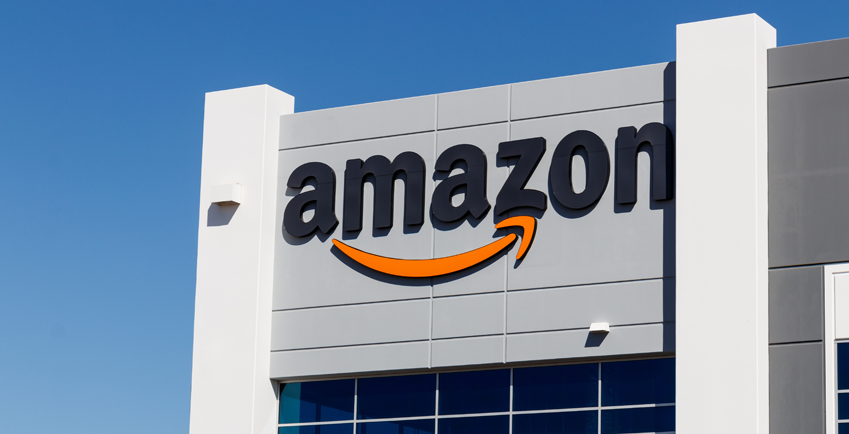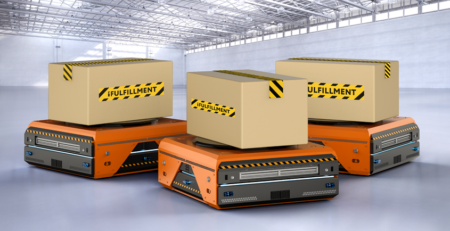Fulfillment By Amazon… What Are My Alternatives?
How are Orders Fulfilled with Amazon FBA?
When you set up to sell with Amazon, your business is automatically enrolled in Fulfillment by Amazon at no cost. It’s not a requirement of being an Amazon seller, but an encouraging option.
The FBA process is quite simple:
- Send your inventory to Amazon fulfillment centers,
- Amazon ships orders (providing all materials, e.g. shipping labels) and handles customer service, refunds, and returns,
- You track your FBA inventory from your Amazon Seller Central dashboard.
A large benefit for sellers utilizing FBA is that all of their products are eligible for Amazon Prime at checkout. In addition, enrolling in FBA will increase your chances of owning the featured offer spot on detail pages.
That being said, there are still shipping costs associated. With your products being automatically eligible for Amazon Prime free 2-day or same-day shipping, you don’t have control over which products are included. Before you sign up for Amazon FBA, you’ll need to calculate not only the fees for the service but also the extra bite that free shipping can take out of your bottom line. Using FBA may impact your product margins more than you anticipate.
Issues With Amazon Fulfillment
The idea behind utilizing a fulfillment option is to outsource processes, so you can focus on optimizing other areas of your business.
But, even though e-commerce share continues to grow on the platform, its third-party sellers are presented with several challenges.
1. Uncertainty and unreliability during global strife.
Unlike managing your own eCommerce store, selling on Amazon leaves you with little control of product merchandising. This lack of control is especially felt in times of global strife.
With the changes in fulfillment options for Amazon sellers, your products may lose visibility to customers. No matter how great your product data is.
Why does this happen? Amazon prioritizes products to match demand, which means if you can’t fulfill orders immediately you’ll likely default on your Amazon seller loan or credit line.
2. Inventory delays and lost products.
When utilizing a fulfillment service, you’ll still need direct insight into the movement of your products.
Sometimes, you may experience delays in inventory being logged into the Amazon FBA system. This can cause shipment delays, further impacting your seller ratings. Worst case scenario: you may even need to cancel orders.
Amazon has a massive supply chain, making it an increased possibility that your product can get lost. If you experience a lost product, you will need to file a claim to get reimbursed. That being said, your reimbursement amount doesn’t always match what you paid for it — it’s actually based on Amazon’s valuation of your merchandise.
Just like when a customer places an order, you’ll want tracking information and other shipping information — especially considering part of an order may ship separately.
On the other side, depending on how much business you are doing, you may fail to supply enough inventory causing delays in shipment. This is where an amazon inventory management system can come in handy.
Something to consider: If you are in the business of dropshipping, you have even less visibility to the fulfillment process of your products.
3. No branding or customization.
This is the biggest issue with FBA — no control over brand and customization.
In a time where brand relevance and unboxing experiences are increasingly important, sellers enrolled in FBA miss out on the opportunity to optimize their customer experience.
In addition, if you have customers looking to give gifts, they are left with little control over packaging.
You may be thinking, “Does this impact the multi-channel fulfillment option?”
Yes, if you enable FBA’s multi-channel fulfillment option, your order from your e-commerce store and orders from other channels will still be sent in Amazon boxes. Talk about a confusing experience for your customers who may interact with you on various channels.
If a strong brand presence is important to you, you may want to look at alternatives.
Fulfillment Alternatives
The good news? Fulfillment by Amazon is not your only option (even if you still want to sell on the online marketplace).
Here are three alternatives to FBA.
1. In-house fulfillment.
In times of crisis or a thriving economy, self-fulfillment can be a great option for your business.
Choosing to do your own fulfillment means you’ll need to manage your inventory storage and manually prepare shipments in-house. Businesses of all sizes choose self-fulfillment — whether you are just starting out or so large you have your own warehouse and fulfillment operation set up. If you are selling digital products (e.g. digital downloads), managing orders on your own is the way to go.
Here are easy steps to self-fulfillment:
- Process the order,
- Select packaging materials,
- Prepare your shipment,
- Document a tracking number for your package,
- Be ready to process returns.
While this process can be seamless for your business, it can be difficult to manage self-fulfillment if you are experiencing high demand or are scaling quickly.
2. Third-party fulfillment (3PL).
This brings us to third-party fulfillment. Another popular option for merchants around the world.
You may be thinking, “Isn’t this the same as Fulfillment by Amazon?” Not exactly.
FBA is a store-specific fulfillment option, meaning the fulfillment process is solely intended for sales on that platform.
Third-party fulfillment, commonly referred to as 3PL, is using software like 1Fulfillment to manage fulfillment. This is a great option if your business is scaling fast, your current fulfillment costs are on the rise, or you are spending too much time on inventory management.
Plus, it’s easy to integrate these platforms into your e-commerce store. You’ll gain benefits like simple inventory management and enhanced branding and customization options.
3. Brick-and-mortar fulfillment.
You’d be surprised by how many businesses, small to large, leverage their brick-and-mortar stores for fulfillment.
While many brick-and-mortar locations are currently closed, it doesn’t mean your inventory has to sit.
Pull inventory from retail locations to provide faster delivery and reduce added inventory expense.
Managing Order Fulfillment Yourself
We quickly outlined the steps to managing order fulfillment on your own. Now it’s time to dive in more detail.
1. You process the order.
Congrats! Orders are coming in. It’s time to kick off the fulfillment process.
Depending on what channel your customer purchases on, your order processing may look different. For many, orders are processed on either a point-of-sale system (POS) or, simply, your e-commerce store. Both of these platforms will provide you with easy access to order information (e.g. shipping address, customer information, order’s line items).
Be sure to optimize your checkout page to ensure you’re collecting all of the information you need.
2. Pick the right packing materials.
How will you ship your orders? Materials go far beyond the packing slip.
If you are shipping anything fragile, you’ll want to make sure you use materials that will protect your products. There’s nothing worse than receiving damaged products.
Rule of thumb: remember that your packaging is an extension of your brand.
3. Package your order.
We recommend setting up a cadence for packing orders. This will allow you to package orders in batches and reduce trips to USPS or another mail carrier when it’s time to ship orders.
4. Label and ship your order.
The last step to getting your order out the door: labeling!
As you package orders, make sure you don’t accidentally mix up labels. You don’t want to be hearing from customers that they’ve received the wrong product.
We recommend printing out all of the labels of orders you are ready to fill. Take into consideration how big of a box the order will require. Will it require more than one? Make sure you have the correct amount of labels for each order.
In addition, when creating labels, make sure you have tracking enabled. This is helpful for both your business and your customers.
You’ve got your package prepared and ready to ship. How do you find a cost-effective shipping solution?
For costs and shipping rates, specifically, you’ll want to review these four areas:
- Service and speed.
- Dimension and weight.
- Destination.
- Shipping volume.
5. Track the package to its final destination.
Lastly, ensure your packages arrive at their destination.
For orders placed on your e-commerce store, you can set up email marketing sends, so your customers are notified when an order has been shipped and when it has been delivered.
Staying in touch with your customer throughout the shipping process allows you to communicate any hiccups as they occur and lets your customer know you’re there to help every step of the way.
Fulfilling Orders on Your Own: Is it Worth it?
We’ve outlined the steps to fulfilling orders on your own, but is it the right decision for your business? Here are a few things to consider.
1. Scaling is tricky.
When you have a steady business, it’s easy to predict your inventory and order frequency. However, if you are experiencing high demand or are looking to scale quickly, fulfilling your own orders can become a pain really fast.
Consider the current and future state of your business when deciding on fulfillment options.
2. 100% control over inventory.
The good news? You have 100% control over your inventory. No need to worry about lost inventory or damaged products getting packaged. You have direct sight and control over every order that goes out your doors.
3. Anyone can do it.
Building a business is difficult. There are many sacrifices and hurdles you need to jump through. But, luckily, managing your own fulfillment process is something that you can do on your own! While it may take some getting used to, like setting up order packaging cadences, you don’t need any specialized knowledge to get it done.
4. Costly way of shipping.
Depending on how many orders you’re sending out, your shipping costs can get expensive. Every business is different, so it’s important to understand your overall shipping costs before committing to a fulfillment solution.
5. Time taken from other company functions.
The time taken to package and manage orders and shipments is time not spent focusing on generating sales or creating new products. Consider where your attention is most needed across the business.
5 Steps of Third-Party Order Fulfillment
Self-fulfillment not for you? Hello third-party order fulfillment, commonly referred to as 3PL order fulfillment.
If you are amplifying your inventory or growing fast, here is what you can expect when pursuing 3PL order fulfillment.
1. Purchase products in bulk.
Whether you are dropshipping, working directly with a manufacturer or wholesaler, or making your products, you’ll want to have products ready to go in bulk.
If you’re not making products by hand, you’ll need to purchase a large amount of inventory. This ensures your third-party fulfillment provider has enough products on hand to manage your incoming orders.
2. Send inventory to your 3PL’s warehouse.
To make sure your 3PL’s warehouse is ready to process your orders, you’ll need to equip them with enough inventory.
In step one, you needed to source bulk inventory. This doesn’t mean you need to send all of your inventory over to your 3PL right off the bat. Measure your order frequency and supply your warehouse with the appropriate inventory levels.
3. List products on your online shop.
Once you have your inventory ready to go, it’s time to make your products available on your online store.
It’s important you provide all the details and information your customer needs to add the item to their shopping cart.
4. 3PL processes orders.
Once you’ve completed steps 1-3, your 3PL provider is ready to process your orders.
Rather than having to notify your 3PL of incoming orders, you can integrate your 3PL order fulfillment solution into your e-commerce store. This makes it easy for you and your fulfillment partner to manage orders.
5. 3PL packs and ships order.
Once the order has been processed, your 3PL fulfillment partner will pack and ship orders on your behalf.
If you want customized packaging, make sure to work directly with your fulfillment partner to ensure they have the materials to do so.
Should I Let a Third Party Fulfill Orders?
Now that you have a grasp on the process, you’ll need to weigh your options. Does third-party fulfillment work best for your business? Let’s look into the considerations.
1. No staff required.
By outsourcing your fulfillment process, you won’t need to hire any in-house fulfillment resources.
This can be a big time- and cost-savings to your business.
2. Be more effective.
Having a third-party handle your fulfillment process can streamline the process. If you have a complex supply chain, 3PL fulfillment is particularly beneficial.
Analyze your business model and prioritize where you can increase efficiency. Third-party fulfillment can do this for you.
3. Save money.
There is nothing more important to a business owner than to save money. There’s no denying that shipping and fulfillment costs can be far more than you ever imagined. This may also be the deciding factor in how you fulfill your orders. Leveraging a third-party fulfillment partner can help you reduce costs.
No Matter How You Fulfill Orders, Communicate With Customers
Transparency. Transparency. Transparency.
This is something you do not want to forget when managing your fulfillment.
Ecommerce brands are faced with more demand for transparency than ever before.
For some customers, it’s wanting to understand the sustainability of your supply chain. For others, simply want to follow their order from the moment they checkout on your online store to when the package arrives at their doorstep.
No matter which fulfillment process you choose, you’ll need to communicate with your customers throughout the order fulfillment process.
This goes far beyond providing a tracking number — and while there are many ways to engage your customers, I recommend you start with these two priorities.
1. Customers don’t mind problems unless you hide them.
In the world of commerce, you never want your customers to discover the problems you are responsible for. Be proactive and communicate with your customers when there is a roadblock in the fulfillment process.
Perhaps you needed to cut order or delay its arrival date, send clear communication on what customers can expect.
When doing so, you’ll want to make sure your customers know their satisfaction is your top priority.
In order to stay connected, you may enable SMS messaging or email marketing sends to stay in touch with your customers. And, don’t forget to provide clear customer service contacts in your communication.
2. Make sure customers know when items are out of stock.
Before your customer even orders an item on your website, you’ll want to make sure you clearly communicate inventory levels.
Now, this doesn’t mean you need to add a live count of products on your product detail pages.
What you may consider is adding an ‘out of stock’ tag with an option for customers to create an email notification for when the item is restocked in a specific size or color. Or, you can add a low stock alert on the product page — which can, in turn, incentivize your customers to make a faster purchasing decision.
When items or collections are restocked, don’t forget to share it in an email marketing send or on your social media accounts. Create excitement for restocks and limited availability items.
Looking for a reliable fulfillment provider? Try 1Fulfillment for FREE




